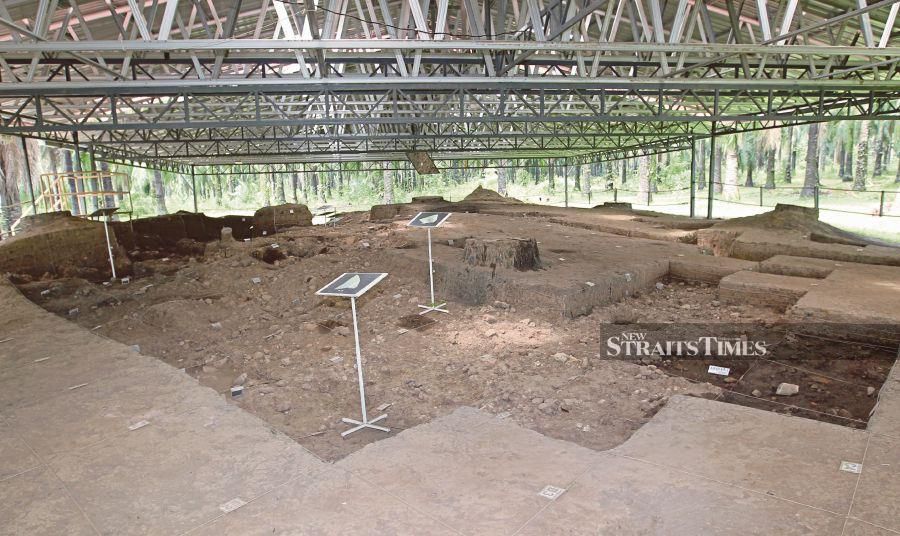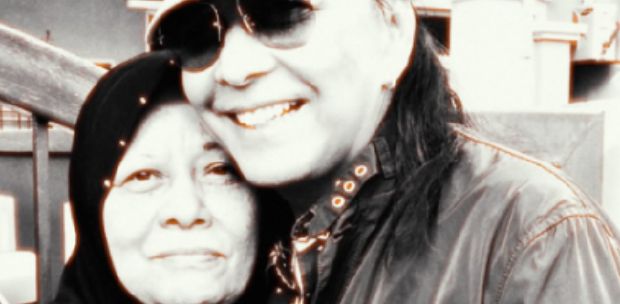I was waiting by my car on the side of a narrow village road while watching my late father and a few others wading through a sea of grass.
The site was near a small town in Alor Star, Kedah. They were trying to rediscover ancient tombs hidden away by dense shrubs.
Due to the size of the road, I had to stay behind to move the car if other vehicles were to pass by.
Then I heard the creaking of an old bicycle mounted by an elderly pakcik.
"Depa dok cari kubuq raja ka?" (Are they trying to find the tombs of kings?)
I was shocked and asked how did he know?
"Kami tau (we know)," he smiled and continued cycling.
That meeting changed my perspective on what we can learn from our elders.
The reason for me being the designated driver at that time was due to our group of history enthusiasts who tried to clarify the claim of a person.
The claim was that there was another version of history hidden from most Malaysians. This knowledge was passed down from one generation to the next in the form of oral history.
I was a bit sceptical at first. However, the elderly cyclist made me question my own perception of what our older generation was keeping from us.
Why do I accuse them of keeping this knowledge? I have a theory.
We know that history is written by the winners. That is why oral history became a significant part of cultural heritage.
What happened to the losers and the normal folk? History is fact but not necessarily true. Sometimes, the truth stares us in the face without our understanding.
For example, there are many places in Kedah that have the word "kota" in them. The most obvious is Kota Setar, which is the district that contains Alor Star.
According to dictionaries, "kota" in English means city, but it can also be a district.
If that is the case, then where are the so-called Kota Siputih, Kota Naga, Kota Mengkuang and other "kota"?
When you visit these places, they are not districts or cities, but villages or sites where factories abound.
If one were to ask the elders in these places, those who remember the oral history imparted to them would tell us that these places had cities or fortresses once.
Take the Sungai Batu Archeological Site. Prior to Professor Datuk Mokhtar Saidin from Universiti Sains Malaysia's re-discovery of the site, it was buried beneath a palm tree plantation.
Imagine a grandchild driving a car with his grandfather while passing by the plantation before the site was re-discovered.
If the grandfather knew the story of the place and told his grandchild about it, what do you think the younger person might say?
"Merepek ja atok, mana ada apa kat sini. Kelapa sawit jer. (That is absurd, grandpa. There is nothing here except a palm tree plantation)."
What do you think the grandfather would feel upon hearing his own grandchild calling him a liar? Now imagine this scenario happening to most of our elders.
Will they continue to impart this knowledge or will they keep it to themselves?
Most probably the latter. My guess is that this wide-spread scenario occurred when the British brought with them their version of science.
Western science works on the basis of the importance of tangible or observable evidence. Without such evidence, there is no proof of any claim.
Our parents or grandparents prior to independence were taught this form of science.
When they were told by their elders about places or sites based on oral history, their understanding of the science that was taught to them in schools would contradict the oral history and label this knowledge as fairy tale or folklore.
Why? Because they could not see any evidence of these sites.
An elder once told me that according to the oral history passed down to him, during the Musuh Bisik war in 1821, the British assisted Thai forces in destroying most of these "kota" in Kedah.
When I asked why would do they do such a thing, the elder said that it was a way for the colonial powers to diminish the identity and the civilisation of a people.
Without great monuments or ancient cities, the winners would insist to the descendants of the losers and the common folk that their people were savages or barbarians.
Then, these imperialists would spread images of "ancestors" who had no shoes on and wore no proper clothing and convinced the common folk that these were their ancestors.
Try to think outside the box. Who were taking these images? What was their agenda? Do our ancestors really look like that?
We are always reminded of the "wisdom" of our elders. Most of the time we equate wisdom with their experiences.
However, our elders also have the knowledge that they have gathered throughout their lifetime.
Do not just investigate the "petua" or wisdom of the use of herbs or other natural remedies. Nor do you cast these aside as mumbo jumbo.
If you have elders in your family or village, go talk with them. Ask them what do they know of anything.
Let them trust you with their knowledge.
The writer is senior lecturer at the School of Tourism, Hospitality and Event Management, Universiti Utara Malaysia. He can be reached at [email protected]





